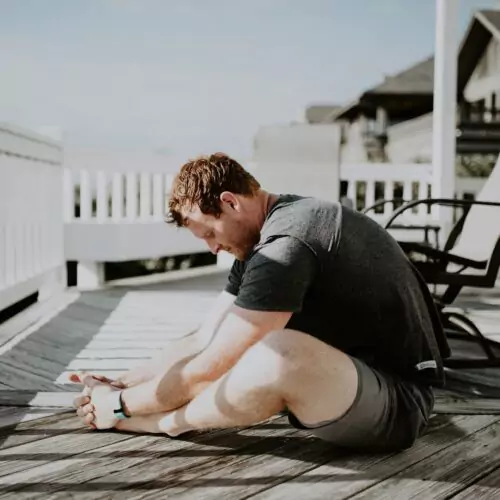After a tough leg workout, a long car ride to Destin, or a 10 hour workday, we have all felt a little tight through our hips. But, when clients come in complaining about “tight hips” they can mean many different things.
Sometimes tightness means just a little stiff in the morning, fatigue during a run, decreased range of movement, inability to perform a particular movement, pulling feeling while stretching, or outright pain with movement or bearing weight.
To make it more complicated, hip issues can come from the actual hip joint (where the thigh bone meets the pelvis), the low back, the IT band (along the outside of your hip and thigh), your pelvis itself, the surrounding muscles, bursa, tendons, or ligaments.
Sometimes there is actually a problem with the hip join causing stiffness or pain. Some of these conditions include arthritis, bursitis, tendinitis, and hip labral tears. However, many of us experience mild to moderate hip tightness without there being anything truly wrong with the joint. In this case, the experience of tightness is usually from weakness or instability around the joint or coming from another part of the body all together.
Why does stiffness occur if we don’t have a joint injury?
Most often tight hips occur because we spend too much of our day sitting. Being in one position for long periods of time is bad for our hips because it limits their range of motion, weakness supporting muscles, shortens other muscles, and sends a signal to our nervous system that the joint needs to be protected (this signal is usually aches or pain).
With all these factors, stretching along is not going to “loosen up “ your “tight hips” . . . or at least won’t provide lasting relief. So what can you do?
If you have tightness or discomfort through your hips, you can follow some of our suggestions below based on the symptoms you are experiencing.
If you have tight hips after a workout . . .
This is when stretching, massage, and foam rolling can be beneficial in improving muscle recovery. However, don’t forget that weakness NOT a shortened muscle may also be to blame for your discomfort so include exercises targeting your hips and buttocks in your workouts. This is especially important if you are a runner or cyclist! Find more specific DIY Tips here . . . FREE REPORT: 8 Proven Ways for Runners to Stop Nagging Hip & Knee Pain.
If you have tight hips after a long car ride. . .
The most important thing you can do during a long car ride is to stop frequently to stand and walk if you are driving. If you are a passenger, you can do ankle pumps and butt squeezes to keep blood circulating, do some seated stretches, and occasionally recline your seat to alter the position of your hips.
If you have tight hips in the morning . . .
Morning stiffness is often a sign of arthritis or joint problems that can be improved with strengthening around the joint. Degenerative changes cause instability in the joint and this is improved with strong stable muscles to give added support. Great exercises to start with are bridges and side leg lifts. You can find out more about specific exercises and stretches, as well as detailed demonstrations, check out our book . . . Heal Optimize Thrive: An Integrative System to Recover Energy, Gain Strength, and Age with Vitality Even After Injury.
If you have tight hips at the end of your work day . . .
Get up and MOVE! You likely feel tight because you are seated most of the day and the muscles in the front of your hip become tight and the muscles across the back of your hips become weak. The more you move, walk, and alternate sitting with standing the less stiffness you will feel at the end of the day. If sitting is inevitable, adding a yoga practice to your after work routine can come with tremendous benefits.
If tight hips don’t improve with these tips or start to get worse . . .
Get HELP! Ideally, if you follow these suggestions for your particular problem and don’t see improvements in about a week – or if tightness or stiffness turns into pain – it’s time to get evaluated by a professional. You likely don’t need to see an orthopedic physician and get expensive X-rays or MRIs, because “tight hips” aren’t usually something that needs invasive treatment. An evaluation by a specialist doctor of physical therapy can most often find the root cause of your symptoms and get you on your way to strong, stable, flexible, pain free hips much quicker.


